How to choose panel heating radiators? Features and main characteristics of steel heating radiators
The current market for devices designed for space heating is very saturated. You are offered just a huge number of different devices that have different qualities and perform a different set of functions. In this article, you will learn what steel panel radiators are, how they work, and why they are good. You will also have the opportunity to understand how to connect such equipment to your heating system.
What is product?
Panel steel radiators are special heating devices that have an average degree of thermal conductivity compared to units made of other materials.
These devices are made of very high quality steel, which is pre-protected by special means from corrosion. Such radiators may or may not have fins. Such devices are used in closed and autonomous heating systems, in which there is a low oxygen content in the coolant.
The design and principle of operation of the device
Panel steel radiators have a fairly simple device. The first layer is stamped steel sheets. They have a small thickness, are strong enough, resistant to corrosion even in case of contact with liquid. Small channels are made in these sheets through which the coolant circulates.

Inside the radiator there is a coolant that circulates through channels connected to each other. It should be said that the coolant is presented in a relatively small amount. This principle of operation allows you to quickly heat the room.
Device advantages

Panel steel radiators have the following advantages:
1. Attractive appearance. Modern designers offer a lot of solutions that will help you organically fit these appliances into your interior.
2. High degree heat transfer. The fact is that steel is an excellent conductor of heat.
3. Integrity. It should be noted that after purchasing the device in the store, it should not be additionally assembled. It is already completely ready for installation.
4. Profitability. The fact is that the radiator does not require a large number coolant, so it heats up much faster than other devices. In addition, the device is equipped with a thermostat.
5. Light weight. Thanks to this, the walls, the heating system do not experience too much stress.
6. Availability.
7. Great variety.
Panel steel heating radiators are enough efficient appliances which can provide Good work in autonomous systems.
disadvantages
Unfortunately, these products also have certain disadvantages:
Low degree of corrosion resistance, especially if the steel is scratched.
Since pipes that have been installed for a long time contain some debris and dirt inside, the channels inside the radiator can quickly become clogged.
Do not install such equipment on central systems heating, where very large. It can simply "break" the device.
Panel steel radiators must be transported very carefully.
Low resistance to water hammer.
Damaged steel you throw away entirely. You won't be able to replace anything in them.
Specifications
Consideration should be given to the quality of the device manufacturers claim.

So, these devices have such specifications:
1. Dimensions: height - 30-90 cm, width - 40-300 cm.
2. Heat carrier temperature- up to 110 degrees.
3. Operating pressure- no more than 10 bar.
4. Test pressure- about 13 bar.
Device classification

If you need steel panel radiators (you already know the characteristics), then you also need to understand their types.
Characteristic |
|
They consist only of a heating panel. There are no ribs and gratings in this type of device. There is no convection in the apparatus, and, therefore, dust. Such a device is used where cleanliness is very important (hospitals, children's institutions). The radiator is also very easy to clean. |
|
Such a product is characterized by one row of panels. However, it has edges with back side. The top grille is completely missing. The advantage of such a device is fast heating. However, its cleanliness needs to be monitored carefully. |
|
This unit has two panels. There are no ribs on it. A grille is provided for air outlet. Two-row models have more power, so they work more efficiently. |
|
In this case, there are two panels, between which there is a convector fin. Distinctive feature such a device is the presence of a casing with which the radiator is closed from above. |
|
Such a product is characterized by two panels, to each of which a convector is welded. This type of radiators is considered the most popular. |
|
There are three panels without convectors. Such a radiator is closed from above with a grille. |
|
Such steel panel radiators RSV2 1 are the most powerful. There are 3 rows of panels, as well as three convectors. From above the device is closed by a casing. Naturally, the device is very demanding in maintenance and cleaning. |
These types of steel panel radiators are the most common.
Features of the choice of the unit
The presented products will work effectively if you choose them correctly. First of all, you should pay attention to the power that must be correctly calculated. For example, single-row steel panel radiators should be used in small spaces. The fact is that they have a minimum power.
Naturally, it is also necessary to take into account the quality of the product. To do this, focus on the reputation of the manufacturer and reviews of other buyers. Steel is considered very popular today. panel radiators Kermi. In addition, there are such manufacturers: Corado, Demrad. Here's what to consider when choosing a steel panel radiator. Russia produces such devices is still not active enough.

Pay attention to the dimensions of the device. It all depends on the capabilities and dimensions of your room. Naturally, important criterion selection is the type of connection. Here it is already necessary to take into account the structural features of your heating system.
And the last thing: do not buy heaters in those stores that refuse to provide you with a quality certificate and other supporting documents. Otherwise, you are just wasting your money.
Device connection methods
There are only two of them. Exist lateral connection steel panel radiators or bottom. It all depends on your heating system, as well as the model of the heater itself. If you have a device with a side connection, then you will connect it to the pipe on the left or right. Such an installation can be done independently, since it does not cause any difficulties.
As for the lower connection method, it is more preferable if it is necessary to manually adjust the heating of the room. In addition, this type of connection makes it possible to hide the supply pipes. Naturally, the price of a device with a lower connection is higher.
Connection instructions

It consists of several stages:
1. Unpack the steel panel radiator, but do not remove the protective film from it.
2. Make sure that the fasteners are installed at the manufacturer's specified distance from the floor (10 cm), wall (4 cm), window sill (minimum 6 cm). Only in this case it is possible to achieve maximum efficiency.
3. Install the device by screwing it to the supply pipes. To do this, use dowels, nuts with washers, fasteners, a plug and keys to screw the latch and to bleed air.
4. Open the central radiator valve.
5. Turn on heating system and check if the product is getting warmer. If it remains cold, then you need to release all the air from it so that the radiator fills with coolant.
Device manufacturing technology
The production of steel panel radiators consists of several stages:
Pressing and further stamping of panels. Their thickness should not exceed 1.25 mm.
Production of convectors in the shape of the letter "P". Steel is also used for this.
Connection of sheets in the panel by means of roller welding.
Fixing convectors.
Application paintwork materials(First, the surface is primed, and then painted). And here it is necessary to use such substances that will be safe for humans and will not respond to temperature changes.
Features of the device operation
It should be noted that panel steel heating radiators are relatively fragile and tender. Therefore, there are some operating rules that must be followed in order for the product to be effective and work as long as possible. So, follow these requirements:
1. Do not allow the presented devices to hit something, especially during transportation.
2. Do not unpack the brought device before you finish painting the room.
3. Try not to drain the liquid from the radiator. To do this, do not open the taps on the product. This will help you avoid rapid metal corrosion.
4. The operating temperature of the device should not fall below 0 degrees.
5. You should also not cover the device, as this makes it less effective. The fact is that in this case, air circulation worsens.
6. Do not use hard sponges to clean the panels. It is best to use soft wipes and detergent. Scouring powders can damage paint and contribute to metal rusting.
In principle, following this instruction will make it possible not to worry about the integrity and safety of your heater. Naturally, it is additionally worth reading the instructions for use, which is included with the unit. That's all the features of the panel steel radiators. Good luck!
1.
2.
3.
4.
When arranging own house many of their owners are faced with the problem of choosing radiators for heating structures. Enough good option are steel radiators whose technical characteristics are impressive. Information on the technical characteristics of heaters helps to make a decision, and more specifically:
- working and pressure testing pressure;
- coolant temperature;
- other parameters that affect the performance of a particular model.
There are two types of steel heating batteries:
- panel;
- tubular.
Steel panel radiators
Features of such devices as steel panel heating radiators are that they combine the properties of a convector and a battery. Usually they are produced in the form of panels. rectangular shape different thickness and dimensions. In the photo you can see how they look.The design that steel heating panel radiators have is simple:
- the base of the device is a panel consisting of two profiled steel plates, which are connected along the perimeter with a welded seam. Inside, vertically arranged elongated channels are formed from steel by stamping. Hot coolant circulates through them in the process of heating the room;
- U-shaped ribs are welded to the panels from the back side, as a result of which more efficient heat transfer is ensured. This element is made for convective heating of a room from cold-rolled steel, only thinner;
- the design of one device can consist of the three panels described above. When joining multiple panels single system manufacturers cover them using side covers;
- a steel panel heating radiator can have a variety of dimensions. For most models on the domestic market, the height is from 300 to 900 millimeters, and the width is from 400 to 3000 millimeters. The depth of the panel device depends on the number of steel panels and can reach 170 millimeters.
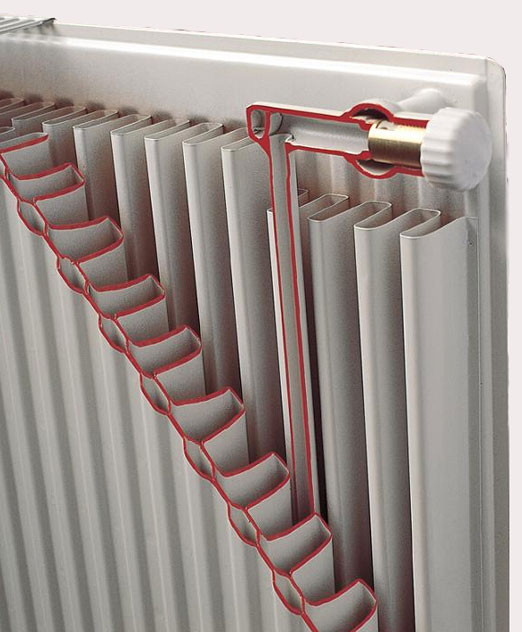
- with lateral connection;
- with bottom connection;
- with universal connection.
Panel steel radiators have technical characteristics depending on the model:
- operating pressure in the range of 6 - 8.5 atmospheres;
- pressure testing does not exceed 13 atmospheres;
- Maximum temperature heat carrier not more than 110 - 120 °C.
Steel tubular heating radiators
This type steel heating radiators are installed much less frequently than panel appliances. The reason for the lesser popularity is the high cost of tubular devices. The structural solution of such heating radiators is a series of vertical or horizontal pipes made of steel, which are connected to the collectors. As a result, the heater quickly heats up and cools down, and its operation is controlled by an automatic regulator.
The design of tubular radiators can be very attractive, they are often made in the form of interior items, as in the photo. They have the following parameters: height 190 - 3000 millimeters, depth - no more than 225 millimeters, length has no restrictions.
Experts recommend: if tubular-type steel radiators are installed under the window, make sure that they are at least 75% of the width of the window opening in length.
These devices have the following settings:
- working pressure is not higher than 12 atmospheres;
- pressure testing up to 25 atmospheres;
- the maximum temperature of the heat carrier is 120 °C.
Flat steel radiators: technical specifications
The steel flat heating radiator is the most popular device in Europe today. Its widespread use is due to its compactness. In addition, they are adapted for automated heating systems, and the technical characteristics of steel heating radiators are simply amazing.Steel lamellar heating radiators have a single-row, two-row and three-row design. Additionally, they are supplied with convective fins.Technical indicators: maximum pressure up to 10 bar, temperature - up to 140°C. A steel flat radiator is installed in both single-pipe and two-pipe schemes.

To produce steel flat heating radiators, manufacturers use cold-rolled steel, which is durable and resistant to corrosion.
Advantages and disadvantages of stainless steel radiators
When comparing the performance characteristics of steel batteries with devices made of other materials, heating radiators made of of stainless steel on a number of indicators have advantages:- due to the simplicity of the design solution, they have a long working life. high quality heating devices made of thick steel (1.2 - 1.5 mm), which positively affects their strength;
- the presence of different options greatly facilitates the installation of steel radiators on their own. On the website of well-known manufacturers, there is always an instruction that clearly and in detail explains how to connect the device when different schemes heating structure;
- the design of steel radiators makes them one of the worthy components of the interior of the apartment.

- instability to corrosive processes, since steel radiators do not tolerate moisture well, and if they are left without a coolant for only a couple of weeks, the corrosion rate increases greatly;
- welds are very sensitive to water hammer;
- on some devices paintwork very unstable.
Video about the technical characteristics of steel heating radiators:
Rating: 666

The steel type of heating appliances is becoming more and more popular every day in the 21st century. Basically all owners, cottages and individual projects install steel radiators.
Moreover, steel radiators for heating are an excellent solution for everyone who needs to build suburban real estate or change the heating system. The choice in favor of such heating systems is explained by the fact that their cost is relatively cheap compared to aluminum appliances, and they also have high heat supply criteria.
Most people, before installing, are wondering how, what is the main task when choosing them? AT modern world There is a wide range of such systems. This is great, because there is variety in the choice, but this variety causes a feeling of uncertainty in the buyer. After all, most of these products are made by many manufacturers, they differ in design, colors and other special categories.
Steel types of radiators are now recognized as the most popular view among heating structures,
Steel heating radiators are a device for insulating and warming apartments and houses, the equipment has a pair of stainless steel sheets welded together, having a water space, or a place for water. Steel batteries should not be placed in places with a humid temperature; this equipment cannot be installed in baths and bathrooms, as it will deteriorate.

Steel radiator device
- for the production of such heating, high-quality metal and hard metals are used, which can give resistance to various shocks and loads. Such equipment is most suitable for private building plans, the service life in this case increases, since in individual buildings there are less stops and loads than in multi-storey buildings;
- apply simple technologies and methods, thanks to this, the price for such products is optimal, which allows you to acquire any type of your own, which is suitable for various types of buildings;
- possession of stability to various attacks, because welding takes place openly, without various chemicals, therefore, hydraulic loads are not terrible;
the outer shell is the main distinguishing feature of such batteries, since iron can be painted in various color scheme, which is sold in stores, can be compacted in sections; thanks to steel, it can heat a building of various sizes; - a universal tool, it can be mounted on any fasteners, however, they are included in the kit, so this equipment can be quickly and accurately mounted independently.
All advantages of steel radiator:
- due to the design characteristics, the service life is practically eternal, having a strong resistance to various injuries, size 2 cm;
- you can install such heating equipment manually yourself, this type of work does not require unique skills and abilities, you just need to install everything according to an existing template or on the manufacturer's website;
- possess unique design, and will fit into various design interiors.
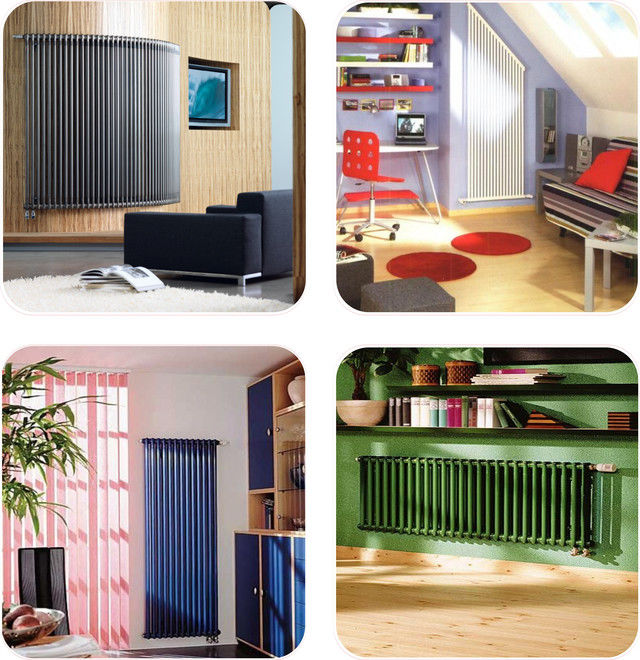
Original design with steel batteries
All the disadvantages of steel radiators for the heating system of a house and apartment:
- the main disadvantage of steel batteries is instability at humid temperatures, because in this case the systems deteriorate and even in some cases cannot be repaired, and corrosion also appears. Also, some of their partial terrain should by no means be kept without water, because they will deteriorate;
- uniquely strong susceptibility to chemical stops on mounted welds;
- poor-quality paintwork leads to peeling and the original appearance of the batteries is lost within 3 years.
Knowing all the disadvantages of this steel equipment, it still becomes worthy for all heating devices. According to consumer reviews, the design has many excellent technical criteria and working hours.
Considering the cost factor, as well as the design and other positive features of the devices, which are also very cheap in cost, such heating may well become the main device for heating your entire room.
Your contacts in this article from 500 rubles per month. Other mutually beneficial cooperation options are possible. Write to us at [email protected]
The most important factor influencing the choice of heating devices are the technical characteristics of heating radiators. These characteristics include such indicators as working pressure, pressure test, coolant temperature and other indicators that determine how efficiently a radiator of a particular model will work.
At first glance, it is quite difficult to understand all these indicators, but upon closer examination, it turns out that all the technical information is quite understandable. And to make it easier for you to choose a radiator according to its technical characteristics, in this article we will describe in detail the types and features of steel radiators.
Steel heating radiators
Panel Type Radiators
Steel heating radiators are of two types:
- Panel radiators.
- tubular radiators.

Panel radiators are heating appliances combining the properties of a convector and a radiator. As a rule, such radiators are produced in the form of rectangular panels of various dimensions and thicknesses.
The design of the panel radiator is quite simple:
- The basis of the radiator is a panel: two profiled steel plates connected around the perimeter with a welded seam. Inside the panel, by stamping the plates, vertical elongated channels are formed, through which the heated coolant circulates.
- To ensure more efficient heat transfer to the panels on the back side can be welded U-shaped fins. The fins are made from thinner cold rolled steel and provide convective space heating.
- The design of one radiator can include up to three such panels. When connecting several panels into one system, manufacturers most often close them with side casings.
- The dimensions of panel-type radiators are very diverse: the height of most models on the market is within 300 – 900 mm, and the width from 400 to 3000 mm. The depth of the panel radiator depends on the number of panels, and can reach 170 mm.

By connection, panel radiators are divided into models with side, bottom and universal connections. As a rule, the price of models with a bottom connection is quite high, since a thermostat is often built into such radiators.
Advice! If there is no built-in thermostat in the model you have chosen, it can be connected through a special thermostatic valve.
Depending on the model, panel radiators have the following characteristics:
- Working pressure from 6 to 8.5 atmospheres.
- Opressovochny pressure no more than 13 atmospheres.
- Heat carrier temperature 110-120 0 С.
Sufficiently low indicators of withstand crimping pressure are main reason the fact that very often experts do not recommend the use of steel panel radiators in multi-storey buildings.
Tubular type radiators
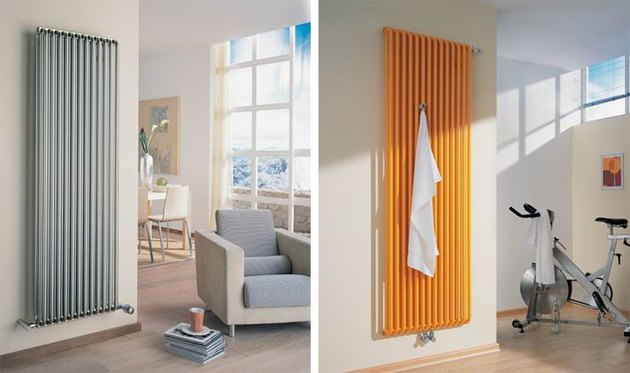
Steel tube-type radiators are used somewhat less frequently than panel-type radiators. The reason for this is the rather high price of tubular devices.
Tubular heaters consist of several rows steel pipes(rows can be both vertical and horizontal) connected to collectors. This design of the radiator makes it very efficient in terms of heat transfer rate: the radiator heats up quickly and cools down quickly under the control of an automatic regulator.
The design of tubular radiators is also very attractive, and sometimes they are even made in the form of interior items (pictured).

Tubular steel batteries have the following characteristics:
- Product dimensions: height from 190 to 3000 mm, depth up to 225 mm. The length of the tubular radiator is practically unlimited.
Advice! Choosing heating radiators tubular type for installation under the window, make sure that their length is at least 75% of the width of the window opening.
- The maximum coolant temperature is up to 120 0 C.
- The maximum working pressure is 12 atmospheres.
- Crimping pressure - up to 25 atmospheres.
Thanks to these characteristics, tubular radiators are ideal option for installation in city apartments: their design is able to withstand even fairly strong water hammer during pressure testing of the heating system.
Advantages and disadvantages of steel radiators
Arguments for"
If we compare performance characteristics steel radiators with heating batteries made of other materials, then according to some indicators, stainless steel devices look preferable:
- The simplicity of the design of the radiators provides them with a fairly long service life. At the same time, high-quality steel heating devices are made from fairly thick (1.2 - 1.5 mm) steel, which also has a positive effect on their strength.
- Different variants designs greatly facilitate the installation of radiators with your own hands. As a rule, on the website of each manufacturer there is an instruction that clearly shows how to connect the battery with a particular design of the heating system.
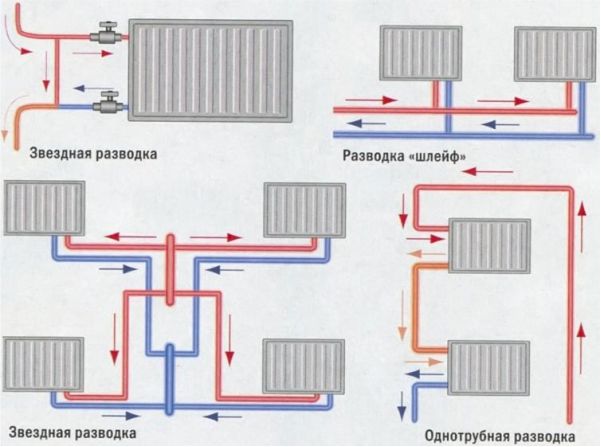
Advice! To make sure that the radiator is connected correctly, we recommend that you watch the video materials attached to the articles in this section.
- Also, the advantage of steel radiators is their design: such a device will not only heat your apartment, but also decorate it.
Arguments against"
It should be replaced that steel heaters are also not without drawbacks:
- The main disadvantage is the increased tendency to corrosion. Steel radiators are very susceptible to moisture, and if you leave the radiator without water for just a few weeks, the corrosion rate will increase many times over.
- Welded seams of steel radiators (this primarily applies to panel-type devices) are very sensitive to water hammer. When crimping the system, such a radiator can be deformed or even burst.
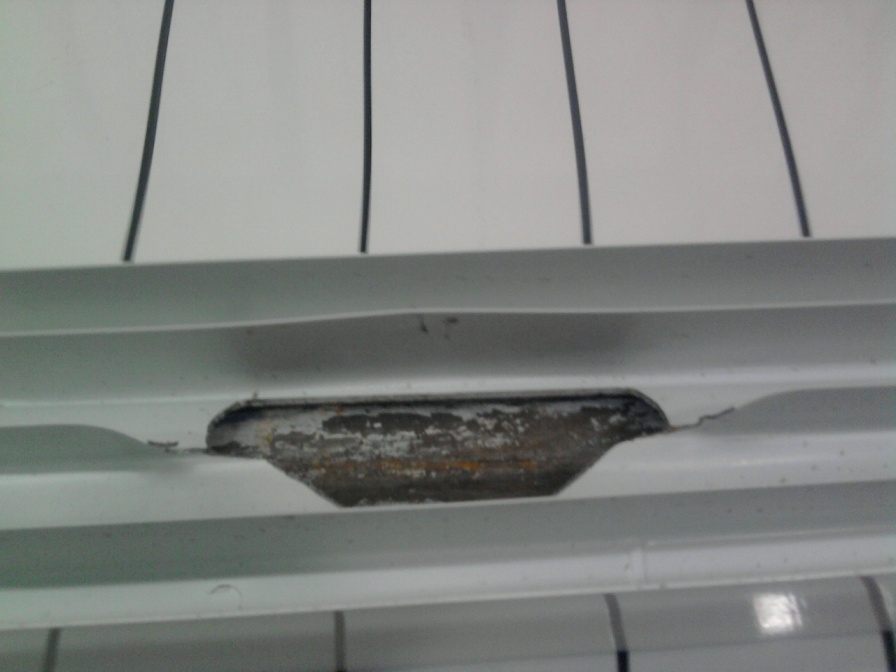
- The paintwork of some radiators is also not very stable, so after a few years of operation it is not very quality battery may start to peel off.
But, even taking into account these shortcomings and analyzing comparative characteristics heating radiators, we can declare with all responsibility that steel radiators have quite decent performance. And if the conditions in your home and financial capabilities allow you to install such devices, then there is no doubt!
To date, heating radiators are made of various materials. Classic cast iron is giving way to new, more advanced and practical options. One of them is steel batteries, which will be discussed in this article.
General provisions
Steel gives heating structures the following qualities:
Advantages
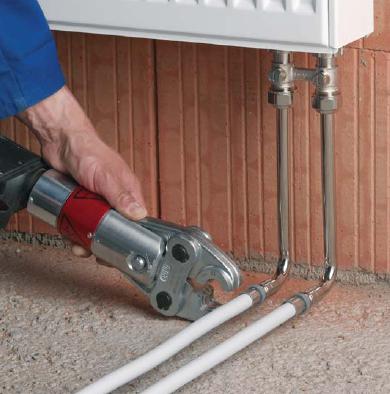
- Affordable price. The described designs are, for example, cheaper than aluminum counterparts.
- Attractive appearance. They do not need to be hidden behind curtains, blocked by furniture or covered. decorative panels. They can themselves serve as part of the interior of your home.
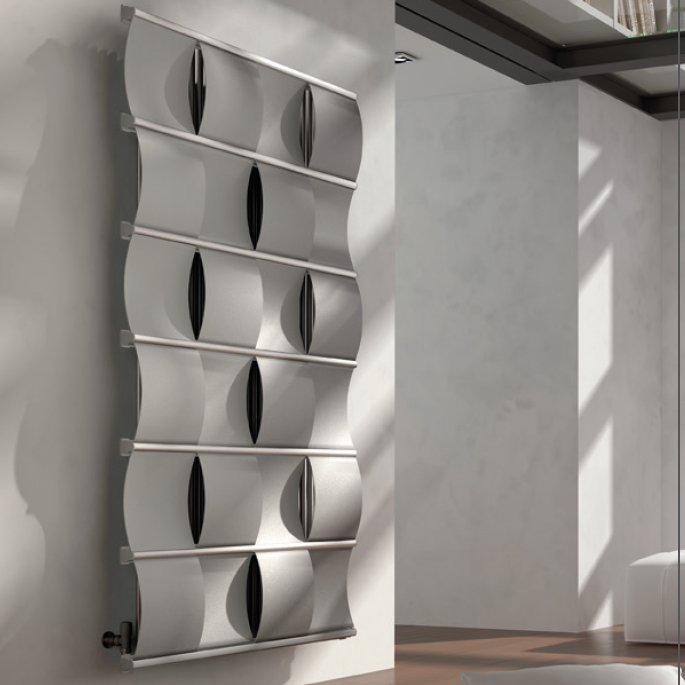
But, of course, it does not do without negative aspects:
disadvantages
- Susceptibility to corrosive processes.
Tip: it is not recommended to use the models in question in buildings with a centralized heating system, from which summer period all liquid drains.
The fact is that damp air accelerates the appearance and spread of destructive rust even more.
- Lack of resistance to water hammer.
Tip: you should equip with special converters that soften the shock wave of the coolant supply, or not use them at all in high-rise buildings.
Otherwise, water hammer short time destroy the entire structure.
- Premature peeling of paint.
Tip: It is advisable to use a high quality special paint for steel products.
This will be much more economical than the frequent repainting of a cheap one.
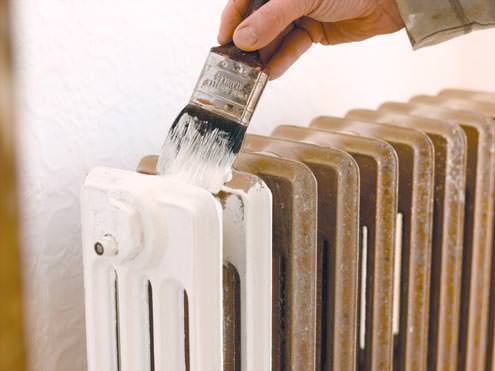
Thus, if we compare the characteristics of heating radiators made of steel with models made of other materials, it will be possible to conclude that they are ideal for private houses, winning in many respects, and are categorically contraindicated for installation in apartment buildings.
Kinds
There are two types of products in question:
Panel

In the core of such a device there are from one to three sections, consisting of a pair steel profiles, welded around the perimeter for docking. The plates are stamped, as a result of which vertical channels appear on them for the passage of the coolant.
To increase productivity, such structures are equipped with additional elements, which leads to their division into many types:
| Name | Description |
| Type 10 | Single row model without convector and cladding |
| Type 11 | There is also only one row without an upper grate, but already with a convector |
| Type 20 | Double row sample with air outlet grille but without convector |
| Type 21 | Two radiators with a single convector, encased |
| Type 22 | Double row radiator, two convectors and cover |
| Type 30 | Three rows of radiators, no convector fins, grille installed on top |
| Type 33 | Three-row model with three convectors and a closed casing |

Tubular

The structure of such a radiator is welded together iron pipes. But it is immediately worth noting that the final price of such products is very high, and not everyone can afford it.
Options

The products under consideration have the following technical characteristics of heating radiators:
| Parameter |
